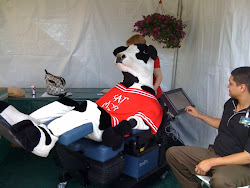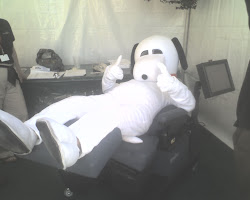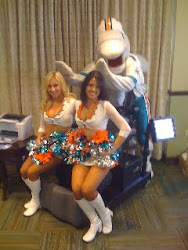Low back pain is the most common injury, statistics show that 30% of all collegiate football players, 54% of wrestlers and 6 out of 7 rhythmic gymnasts suffer low back pain.
Degenerative disc disease (DDD) and spondylosis are the most common structural reasons behind the athlete’s low back pain. In fact, DDD is most common in Olympic athletes. Injuries may include repetitive impact injuries (Running), weight loading (Weight Lifting), contact (football, soccer, basketball) and twisting/arching injuries (golf, tennis, racquetball). These injuries may lead to the diagnoses of facet joint syndrome, sprain/strain and mechanical low back pain.
Gatt, et al research studied football lineman during their blocking maneuvers and found that the compressive forces on their backs exceeded the force needed to cause failure of the discs. This suggests linemen are specifically at risk for repetitive disc microtrauma. These researches also found that the most influential factor affecting compressive loads on the back was increased lumbar flexibility.
In order to help prevent an injury, an athlete may utilize the skills of a professional trainer or coach. The athlete must always warm up prior to participating in practice or a game, the warm up should be specific to the muscles that will be used in their sport. These exercises should be routinely performed prior to practices and competition to minimize the risk of injury; the focus of these exercises should be to increase flexibility and increase the muscle and ligament responses to work demand. These warm ups will increase circulation to the muscles, stretch the lower and upper back and related muscles, and should be progressive in intensity.
If any injury does occur, athletic rehabilitation may be initiated by the team trainer or physician. The rehabilitation should be aggressive, pain reducing improving the range of motion, flexibility and strength of the back. The main objective should be to improve the condition of the athlete to limit the time they spend out of the sport. This is more important in professional sports as it may have financial and statistical impacts on the team. Athletic rehabilitation utilizes analysis of strength and range of motion to determine when an athlete may return to their sport.
Current research has proven that there is no medical benefit to prolonged bed rest (longer than 2 days) for back injury athletes. In fact, bed rest promotes a substantial loss of bone mass and muscle mass, possibly as much as 20% muscle strength per week. Research has also demonstrated that motion enhances recovery from injury. Movement increases disc nutrition, ligament & tendon strength, decreases joint adhesions, scar tissue and pain. Patient activity prevents the rapid de-conditioning of muscles that may be caused by the injury.
Cooke and Lutz have devised a 5 stage rehab protocol for athletes with low back pain:
1. Early Protected Mobilization: brief period of rest, heat or ice, NSAIDS, soft tissue mobilization, epidural injections, once pain is controlled an exercise program is begun to restore range of motion in lumbar region and lower extremities.
2. Dynamic Spinal Stabilization: focuses on co-contraction exercises of the abdomen and lumbar muscles to stabilize the injured motion segment. Isometric exercises re-educate the muscles to maintain a correct neutral position.
3. Strengthening: Stage 3 focuses on strengthening of the lumbar musculature.
4. Return to Sports Activity: in Stage 4, the athlete returns to sports activity, performs Plyometric exercises.
5. Maintenance Exercise Program: Stage 5 includes performing a maintenance exercise program with regular home and warm up exercises.
Criteria which was utilized to determine fitness to return to sports activity were full painless range of motion, the ability to maintain a neutral spine during sports specific exercises and return of muscle strength, endurance and control.
Motion therapy may be performed via physical exercise or utilizing a medical device which delivers motion therapy to the specific body part. Motion has been shown to enhance recovery from an injury, decrease pain and will get your athlete off the injured reserve list quicker and back into the game.
This Blog is maintained by MediCepts, Inc, manufacturer of the SpineSix.All content has been provided by employees of MediCepts, Inc.
Want to learn more about effective rehabilitation equipment for back pain patients? Read more of our blog posts, and don't forget to bookmark this blog!










